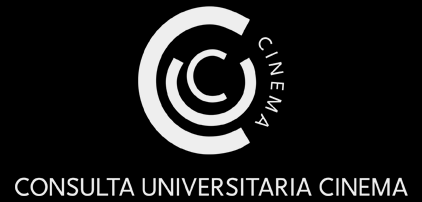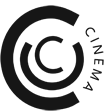Documentary films constitute a challenge for philosophical thinking. Relying on reality and addressing it explicitly as well, they raise the problem of the encounter between world and images. The indexical images they feature do not merely reproduce the real in its immediacy, but also constitute, in themselves, a particular relation to it. Rather than a pure objective material, they are always a product of a dialogue between the visible and its perception, the historically developed reality and the meanings ascribed to it. Being at the same time reproductions of the empirical world and artistic configurations, documentaries appeal for critical reflection rather than blind belief. However, many commercial productions, educational formats, or journalistic reportages tend to conceal these intricate connections and claim to represent the factual world in an accurate way through rather conventional forms. By uncritically using strategies such as seemingly neutral voiceovers, interviews with experts or victims, live footage or archival images contextualized in a coherent, unilateral way, they obscure the fact that the topical issues have not only been mediated through framing, editing, and sound, but also through the filmmaker’s stance towards her subject.
By contrast, examples of the critical awareness of the complex relation between filmic images and the reality they address can be found in the work of independent filmmakers and theorists. Trinh T Min-Ha, for instance, not only problematizes the confusion of the notion of truth with that of meaning along with the authoritarian attitude of traditional ethnographic film, but she also develops a particular “method” (“speaking near-by”) for her own films. Werner Herzog opposes to what he calls the “truth of accountants” his own notion of “ecstatic truth”, which intertwines understanding and experience, and thus needs to be fabricated rather than recorded. Hartmut Bitomsky considers that making an image always means to extract it from an original context, and uses the notion of “ready-made” when he speaks of his own images as quotations of reality. Jean Rouch advances the idea of ciné-transe as a means to penetrate into deeper strata of the real by partaking in the action, and recently, Pooja Rangan points to the authoritarian attitude concealed under the label of humanitarianism in many documentaries. In a similar vein, many artistic documentaries, as we came to call them, and essay films by committed filmmakers implicitly criticize the existing power structures and rhetoric in which assertions about objectivity operate. Through aesthetic means they problematize standardized perception and deflect the focus in order to allow for a critique of images and common sensical norms. These can be as various as distanciation, separation between sound and image, slow motion (Wang Bing, S. Loznitsa), meta-cinematic gestures disrupting the film’s indexical connection to the real (J-L. Godard), reflective voiceover commentary and creative use of found footage (C. Marker), experimental or archeological approaches (H. Farocki), combination of observational techniques with expressive montage (F. Wiseman), specific devices (M. Rau, L. Castaing-Taylor, and V, Paravel), alternative perspectives on history (J-M Straub, C. Akerman, P. Costa, R. Panh), strategies of détournement and of poetic deconstruction of viral media (G. Thomson and S. Maglioni), use of second hand images and radical editing (D. Gagnon), recourse to fiction (E. Morris, N. Perada), and the list is not exhaustive. These attempts show that aesthetics and politics, society and its representation, knowledge and its embedding in institutional forms, are interrelated on many levels, and this is why they allow for complex philosophical investigations into ethical, political, epistemological, and aesthetical aspects of reality today.
This issue of Cinema – Journal of Philosophy and the Moving Image aims at exploring the complex ways in which documentary films, as both an artistic form and a representation of the social, material, political, and medial reality, intersect with philosophical thinking.
Submissions are accepted in English, Portuguese, and French and should be sent to cjpmi@fcsh.unl.pt
Prospective authors should submit a short CV along with the abstract.
Abstract proposals (max. 500 words) are due on April 1st, 2020, and a notice of acceptance will be sent to the authors on April 15, 2020.
A selection of authors will be invited to submit full papers according to the journal’s guidelines. Acceptance of the abstract does not guarantee publication, since all papers will be subjected to double blind peer-review.
Cinema also invites submissions to its other sections: Interviews, Conference Reports and Book Reviews. Please consult the web site of the journal for further details.
Scholars from all disciplines interested in the narrativity of spaces are invited to send essay proposals aimed at investigating the theme at a theoretical level and/or focusing on specific case studies. The bibliographical references offer some examples of the different theoretical-methodological areas from which the contributions may come. Possible areas of investigation are:
- the narrative design of architectural and urban spaces;
- the narrative configuration of museum and exhibition spaces;
- the design of virtual and videogame environments, immersive or not;
- the penetration of cinematic/televisual imagery into everyday space;
- the body-environment relationship in the constitution of the media experience;
- the role of technological devices in the mediation between subject and environment;
- the role of images and sounds in the production of narrative space;
- the functioning of cinematic/televisual storytelling in light of contemporary media structures;
- the issues of environmentalization and premediation in contemporary media studies.
Abstract proposals in English or Italian (max. 2000 characters, 5 references, 5 keywords and a short bio) can be sent to adriano.daloia@unicampania.it and enrico.carocci@uniroma3.it) by March 22, 2020. All notifications of acceptance will be sent no later than March 31, 2020. If accepted, 40.000-character essays will then be required for double peer review by June 28, 2020.
Call for Essays





